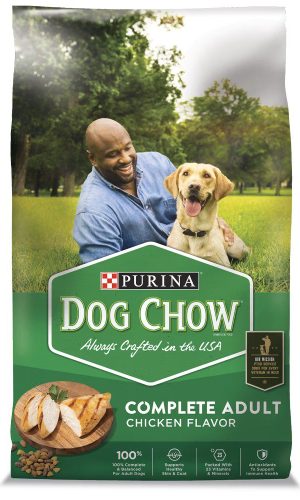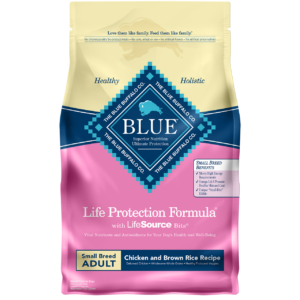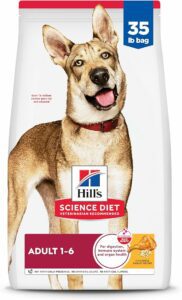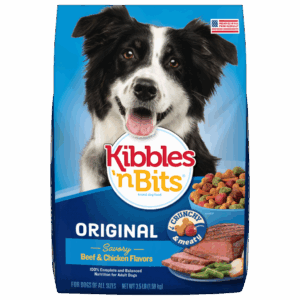This post contains affiliate links. As an Amazon Associate, I earn from qualifying purchases at no additional cost to you. For more information, please see my disclosure policy
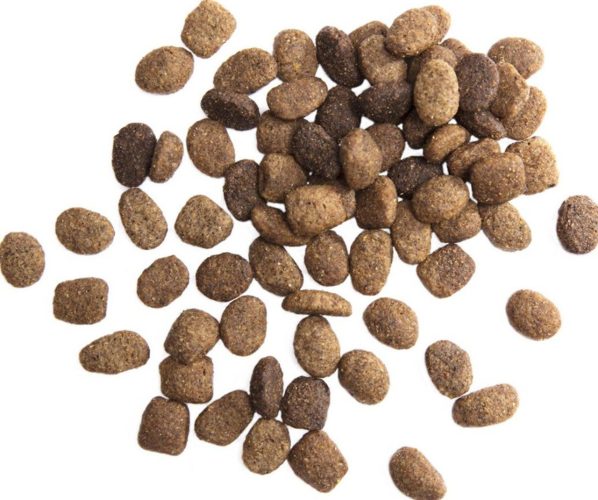
When your family’s budget is tight but you still want to feed your dog something more than the absolute cheapest option available, you need a dog food that delivers basic nutrition without breaking the bank. Purina Dog Chow Complete Adult promises to be that reliable, everyday solution – featuring “real chicken” somewhere in the ingredient list, 100% complete and balanced nutrition, and the familiar red checkerboard bag that’s been a grocery store staple for decades. With pricing that makes feeding multiple dogs affordable and nationwide availability that ensures you’ll never run out, this food carries mass-market appeal – but does it deliver genuine nutritional value for budget-conscious families, or are you getting exactly what you pay for in terms of filler-heavy, lowest-common-denominator pet nutrition?
In the crowded budget dog food arena, Purina Dog Chow occupies a unique position as the granddaddy of mass-market pet nutrition. This isn’t trying to be a premium food with cutting-edge ingredients or specialized formulations. The formula features whole grain corn as the first ingredient, meat and bone meal as the primary protein source, and a host of controversial additives that keep costs low and shelf life long. However, with pricing that can feed a large dog for under $40 per month and guaranteed nutritional completeness that meets AAFCO standards, this food represents the ultimate compromise between cost and basic adequacy that demands honest evaluation of whether rock-bottom pricing justifies significant nutritional limitations
Our Overall Rating
Feature
Rating
Details
Protein Quality
Meat and bone meal primary source, significant plant proteins
Digestibility
Basic digestibility, heavy grain content may cause issues
Price to Value
Excellent value for extremely budget-conscious owners
Ingredient Quality
Below-average quality, multiple controversial ingredients
Palatability
Artificial flavors enhance appeal but may not suit all dogs
Safety Profile
No recent Dog Chow recalls, but some Purina line concerns
Customer Reviews
Mixed results, long-term users vs. quality-conscious critics
Is Purina Dog Chow Complete Adult Right for Your Dog?
Perfect For:
- Extremely budget-conscious families needing affordable dog food
- Dogs with no specific health issues or dietary sensitivities
- Multiple-dog households where feeding costs add up quickly
- Rural areas where premium brands may not be available
- Temporary feeding situations requiring widely available options
Not Recommended For:
- Dogs with grain allergies or corn sensitivities
- Dogs requiring high-quality protein for performance or health
- Owners prioritizing premium ingredients and natural nutrition
- Dogs with digestive sensitivities or chronic health issues
- Families able to invest in higher-quality nutrition
Our In-Depth Analysis
Dive into our comprehensive reviews of pet products, ensuring you make informed decisions for your furry friend’s health and happiness.
Nutritional Breakdown: What's Actually in Purina Dog Chow Complete Adult?
Let’s examine what you’re actually getting when you purchase that familiar red bag that promises “complete nutrition” at bargain-basement pricing. When you’re feeding your dog this formula day after day, what nutritional foundation are you providing?
Starting with protein – the most critical macronutrient for canine health and the area where budget foods typically make their biggest compromises. Purina Dog Chow delivers 21% protein on an as-fed basis, translating to approximately 24% on a dry matter basis. This meets AAFCO minimum requirements for adult dog maintenance, but just barely. According to the Dog Food Advisor analysis, the first ingredient is whole grain corn, while the second ingredient is meat and bone meal, which serves as the primary animal protein source.
Meat and bone meal is a rendered product that concentrates protein but can vary significantly in quality depending on the source materials used. Unlike fresh chicken or named meat meals (like “chicken meal”), generic “meat and bone meal” provides no transparency about what animals contributed to the protein content. While it does offer concentrated nutrition – containing nearly 300% more protein than fresh meat – the biological value and digestibility can be inconsistent.
The protein picture gets more concerning when you consider the significant plant-based protein contributors. Corn gluten meal, the third ingredient, contains 60% protein but has lower biological value than animal proteins. Soybean meal, the fifth ingredient, adds more plant protein. When you consider the protein-boosting effect of these plant proteins, this suggests a kibble containing just a moderate amount of actual meat.
For fats – essential for energy, coat health, and nutrient absorption – Dog Chow provides approximately 10% fat content (as-fed). The primary fat source is beef fat preserved with mixed tocopherols, which is actually a quality ingredient that provides essential fatty acids and natural preservation. However, the relatively low fat content may not support optimal coat condition or provide adequate energy for active dogs.
Here’s where the budget nature becomes most apparent – carbohydrates dominate this formula. Whole grain corn serves as the first ingredient, with estimated carbohydrates comprising approximately 57% of the formula on a dry matter basis. This extremely high carbohydrate content reflects the economic reality of grain-based pet food: corn costs significantly less than meat protein and provides calories and bulk to create a filling meal at minimal cost.
The vitamin and mineral supplementation meets AAFCO requirements but uses basic forms rather than the chelated minerals found in higher-quality foods. The minerals do not appear to be chelated, which can make them more difficult to absorb. Additionally, the formula includes artificial colors (Yellow 6, Yellow 5, Red 40, Blue 2) that serve no nutritional purpose and are added purely for human visual appeal.
When you analyze what’s really in that budget-friendly bag, Purina Dog Chow emerges as exactly what it appears to be: a grain-heavy formula designed to meet minimum nutritional requirements at the lowest possible cost. The 57% carbohydrate content and reliance on plant proteins reflect the economic compromises necessary to achieve rock-bottom pricing, though the inclusion of quality fat sources and adequate vitamin supplementation prevents it from falling into the “completely inadequate” category.
Guaranteed Analysis
- Crude Protein: 21% (minimum)
- Crude Fat: 10% (minimum)
- Crude Fiber: 4.5% (maximum)
- Moisture: 12% (maximum)
Dry Matter Basis Analysis
When moisture is removed for accurate comparison:
- Protein: 24% (dry matter basis)
- Fat: 11% (dry matter basis)
- Fiber: 5% (dry matter basis)
- Estimated Carbohydrates: 57% (by calculation)
2025 Comprehensive Analysis & Breakdown
Protein Sources
- Meat and bone meal (primary)
- Corn gluten meal
- Soybean meal
- Chicken by-product meal
- Meets AAFCO minimums
- Concentrated protein from meal
- Cost-effective approach
- Complete amino acids
- Unnamed meat source
- Heavy plant protein reliance
- Variable quality concerns
- Low biological value
Below average protein quality; 21% protein barely meets requirements
Monitor energy and muscle tone; may need supplementation for active dogs
Fat Content
- Beef fat
- Natural preservation
- Basic essential fatty acids
- Quality fat source
- Natural preservation
- Energy provision
- Cost-effective
- Limited variety
- Basic fatty acid profile
- May not support optimal coat
- No omega-3 sources
Low fat content at 10%; basic but adequate
Consider fish oil supplement for coat health
Carbohydrates
- Whole grain corn (primary)
- Whole grain wheat
- High carb percentage (57%)
- Cheap energy source
- Filling bulk
- Shelf stability
- Wide availability
- Corn as main ingredient
- Very high carb content
- Potential allergens
- Grain-heavy formula
Extremely high carb content; corn-based rather than meat-based
Watch for grain sensitivities; may cause energy crashes
Vitamins and Minerals
- Standard supplementation
- 23 vitamins and minerals
- AAFCO compliance
- Basic forms
- Prevents deficiencies
- Complete nutrition
- Cost-effective
- Legally adequate
- Non-chelated minerals
- Basic absorption
- Standard potency
- No optimization
Meets minimum requirements with basic forms
Adequate for healthy adults; basic nutritional needs only
Fiber Sources
- Grain-based fiber
- Basic digestive support
- Limited variety
- Stool formation
- Cost-effective
- Basic digestion
Limited fiber types
Grain-dependent
No prebiotics
Minimal gut support
Basic fiber content from grain sources
Ensure adequate water; may need probiotic support
Preservation
- Mixed tocopherols
- Basic preservation
- Artificial additives
- Adequate shelf life
- Natural fat preservation
- Stable formula
- Some artificial additives
- Basic preservation only
- Chemical preservatives present
Industry standard with some artificial components
Store properly; acceptable preservation methods
Manufacturing
- US facilities
- Mass production
- Basic quality control
- Cost-focused methods
- Consistent availability
- Affordable pricing
- Wide distribution
- Basic safety standards
- Mass production focus
- Cost-cutting priorities
- Basic QC protocols
- Limited transparency
Large-scale budget manufacturing; focuses on cost efficiency
Basic safety acceptable; no premium quality expectations
Ingredient Deep Dive: The Economics of Budget Pet Food
When you examine Purina Dog Chow’s ingredient list, you’re looking at a masterclass in food economics – every component serves the dual purpose of meeting minimum nutritional requirements while maintaining the lowest possible production costs. This isn’t a formula designed for optimal canine health; it’s engineered for basic adequacy at mass-market pricing.
The Budget-Driven Approach
Whole grain corn takes the top position as the first ingredient, providing the bulk of calories and serving as the foundation of this grain-heavy formula. While corn isn’t inherently harmful to dogs, its prominent position indicates this food is primarily a corn-based product with other ingredients added rather than a meat-based food supplemented with grains. Corn offers cheap calories and carbohydrates but provides limited nutritional value compared to animal proteins.
Meat and bone meal serves as the primary protein source, a rendered concentrate that contains nearly 300% more protein than fresh chicken. However, as an unnamed source (“meat and bone meal” rather than “chicken meal” or “beef meal”), it offers no transparency about the animals used or quality standards applied. The rendering process itself is sound – it concentrates nutrients efficiently – but the lack of species identification raises questions about consistency and quality control.
The third ingredient, corn gluten meal, represents another cost-cutting strategy. This is the rubbery residue left after corn starch removal, containing 60% protein but with lower biological value than meat proteins. While it boosts the protein percentage on the label, it doesn’t provide the same amino acid profile or digestibility that animal proteins offer.
The Controversial Additives
Perhaps most concerning for health-conscious pet owners is the extensive list of artificial additives that serve no nutritional purpose. The formula includes Yellow 6, Yellow 5, Red 40, and Blue 2 artificial colors that are added purely to make the food more visually appealing to humans. Dogs are largely colorblind and couldn’t care less about kibble color, making these additives a clear example of marketing over nutrition.
The inclusion of “natural flavor” and “egg and chicken flavor” suggests the need to enhance palatability artificially, likely because the base ingredients don’t provide appealing taste on their own. While these aren’t necessarily harmful, they indicate a formula that requires flavor enhancement to achieve acceptable palatability.
The Necessary Nutrients
To Dog Chow’s credit, the formula does include several necessary components for nutritional completeness. Beef fat preserved with mixed tocopherols provides essential fatty acids and natural preservation, representing one of the higher-quality ingredients in the formula. The comprehensive vitamin and mineral supplementation ensures dogs receive essential micronutrients, even if the delivery forms aren’t optimal.
The formula provides 23 vitamins and minerals to support immune health and overall nutrition, meeting AAFCO standards for complete and balanced adult dog nutrition. While the forms may not be as bioavailable as chelated minerals, they do prevent nutritional deficiencies.
The Safety Considerations
The formula contains sodium selenite, a controversial form of selenium that appears nutritionally inferior to selenium yeast. Additionally, garlic oil is included, which can be controversial given garlic’s potential toxicity to dogs in large quantities. While these ingredients are used in amounts generally recognized as safe, their inclusion highlights the cost-focused rather than optimization-focused approach to formulation.
The Bottom Line on Ingredients
Purina Dog Chow’s ingredient list reflects the economic realities of producing pet food at extremely low prices while meeting basic nutritional requirements. The formula succeeds at providing adequate nutrition to prevent deficiency diseases and support basic health in healthy adult dogs. However, it achieves this through heavy reliance on inexpensive plant proteins, grain fillers, and artificial additives that prioritize cost savings over nutritional optimization.
For families facing genuine financial constraints, this represents functional dog food that will keep their pets fed and healthy in the short term. For owners able to invest more in their dogs’ nutrition, the ingredient compromises become harder to justify given the availability of better options at modest price premiums. The formula exemplifies the “you get what you pay for” principle in pet nutrition – adequate basic nutrition with significant compromises in quality and optimization.
Real-World Performance: What Pet Parents Are Actually Saying
So the budget nutrition looks concerning on paper, but how does Purina Dog Chow actually perform for real dogs in everyday feeding situations? We’ve compiled extensive feedback from long-term users, veterinarians, and pet nutrition experts to give you the unfiltered truth about this formula’s practical effectiveness and limitations.
The Long-Term Success Stories
Many pet parents report feeding Dog Chow for years or even decades with healthy, long-lived dogs. “I have fed Purina Dog Chow to every dog I had since the 80s. They live long happy lives,” represents a common sentiment among loyal customers who appreciate the consistency and affordability. For healthy dogs without specific dietary needs, the basic nutrition often proves adequate for maintaining general health.
The budget benefits resonate strongly with families managing multiple pets or facing financial constraints. “The quality seems to be very good for the price you pay” captures the value proposition that keeps customers returning despite ingredient limitations. For many families, Dog Chow represents the difference between being able to feed their dogs adequately versus not being able to afford pet ownership at all.
Some dogs show good acceptance and stable digestion on the formula, particularly when used consistently without frequent changes. The artificial flavoring and fat content do make the food palatable for many dogs, especially those accustomed to grain-heavy diets.
The Concerning Reality Checks
However, quality-conscious pet parents and veterinary professionals express significant reservations about long-term feeding. Critics argue that foods made with low-quality meat byproducts and heavy preservatives, additives, and chemicals are “not optimal for any mammal”, suggesting that feeding such products may lead to higher veterinary bills over time.
The high carbohydrate content creates digestive challenges for some dogs, particularly those with grain sensitivities or those requiring higher protein for active lifestyles. Some owners report throwing up issues after eating recent bags, suggesting potential quality control inconsistencies.
More concerning are isolated reports of serious health issues potentially linked to the food, including one account of a dog going “from healthy to DEAD” with liver, gallbladder, and intestinal swelling after switching to Dog Chow. While such reports are rare and causation isn’t established, they highlight the importance of monitoring any pet’s response to diet changes.
Veterinary Professional Perspective
Many veterinarians acknowledge that 90% of dog foods sold in the US follow identical AAFCO nutrition standards, from the cheapest to most expensive, suggesting that Dog Chow does meet basic nutritional requirements. This technical adequacy means the food won’t cause obvious deficiency diseases in most healthy dogs.
However, veterinary nutritionists increasingly distinguish between “adequate” and “optimal” nutrition. While Dog Chow prevents malnutrition, the heavy reliance on plant proteins, high carbohydrate content, and artificial additives don’t support the kind of species-appropriate nutrition that promotes long-term vitality and disease prevention.
Many veterinarians recommend Dog Chow as an acceptable temporary solution for families facing financial hardship, but suggest upgrading nutrition when economically feasible. The food serves as a nutritional safety net rather than an optimal choice.
Recent Safety Concerns:
The brand faced significant scrutiny in 2024 when the FDA received approximately 1,300 adverse event reports for various Purina pet foods between November 2023 and April 2024, with most clinical signs including gastrointestinal, renal (kidney), hepatic (liver), and/or neurological symptoms. However, FDA testing of unopened product was negative for bacteria and toxicological hazards, and no official recalls were issued.
There is not currently a Purina Dog Chow recall in effect, and Purina has maintained that there are no health or safety issues or recalls with their products. The 2024 controversy appears to have been driven by social media rumors rather than confirmed safety issues, though the volume of reports prompted FDA investigation.
The Practical Feeding Reality
For many families, Dog Chow represents a practical compromise that enables responsible pet ownership within financial constraints. The food is “particularly good for families looking for a budget-friendly option” and “trusted by many dog owners” despite not being “the fanciest dog food out there”.
Long-term users often report that their dogs maintain stable weight, normal energy levels, and basic health on the formula, though they may not achieve the coat shine, digestive optimization, or vitality seen with higher-quality nutrition. For dogs with robust constitutions and no specific health issues, this basic adequacy often suffices.
The Honest Assessment
The feedback pattern reveals Dog Chow as exactly what it appears to be: functional budget nutrition that meets minimum requirements without providing optimal health support. For families genuinely unable to afford better options, it represents responsible feeding that prevents malnutrition. For those able to invest modestly more in their pets’ nutrition, the limitations become harder to justify given the availability of significantly better options at relatively small price premiums.
The food succeeds at its intended purpose – providing basic, affordable nutrition that keeps dogs fed and legally “complete and balanced.” It fails at providing the kind of species-appropriate, high-quality nutrition that supports optimal long-term health and vitality. Understanding this distinction helps pet parents make informed decisions based on their priorities and constraints.
The Verdict: Is Purina Dog Chow Complete Adult Worth the Rock-Bottom Price in 2025?
After comprehensive analysis, Purina Dog Chow Complete Adult earns a modest 2.3 out of 5 stars – placing it squarely in the “basic adequacy with significant limitations” category for budget-conscious pet feeding. This represents exactly what the food is designed to be: functional nutrition that meets minimum requirements without any pretense of providing optimal canine health support.
Purina Dog Chow occupies a specific and often necessary role in the pet food ecosystem – it makes dog ownership financially accessible to families who might otherwise be unable to afford pet care. Unlike premium brands that target affluent pet parents seeking optimization, Dog Chow serves families facing genuine economic constraints who need basic nutrition at absolute minimum pricing.
The Economic Reality:
For families feeding multiple large dogs or facing serious financial limitations, Dog Chow often represents the difference between responsible pet ownership and surrendering animals due to inability to afford adequate nutrition. At approximately $0.50 to $1.00 per pound, a 40-50 lb bag typically costs around $20 to $40, making it possible to feed a large dog for under $40 per month. Analysis of Chewy.com pricing shows Dog Chow among the least expensive dog foods available, with some formulations priced as low as $0.46-$0.75 per pound. This accessibility factor cannot be dismissed when evaluating the food’s role in society.
The guaranteed nutritional completeness means dogs won’t develop obvious deficiency diseases, and the widespread availability ensures families never face supply interruptions that could force expensive emergency food purchases. For short-term feeding or emergency situations, these practical benefits become genuinely valuable.
The Nutritional Compromises:
However, the 57% carbohydrate content, reliance on plant proteins, and extensive use of artificial additives represent significant nutritional compromises that become harder to justify for long-term feeding. Professional analysis rates Dog Chow at just 1.5 stars due to its below-average ingredient quality and moderate meat content. The food provides calories and basic nutrients without supporting optimal health, energy, or longevity.
For dogs with any health issues, grain sensitivities, or high protein requirements, the limitations quickly become problematic. The artificial colors, unnamed meat sources, and heavy grain content represent outdated approaches to pet nutrition that better brands have largely moved beyond.
Who should choose Purina Dog Chow Complete Adult:
- Families facing genuine financial hardship who need affordable basic nutrition
- Temporary feeding situations requiring widely available, shelf-stable options
- Multiple-dog households where premium food costs become prohibitive
- Rural areas where premium brands may not be consistently available
- Dogs with robust health who have thrived on basic commercial diets
Who should look elsewhere:
- Dogs with any grain sensitivities, allergies, or chronic health issues
- Owners able to invest modestly more for significantly better nutrition
- Active dogs requiring higher protein and energy density
- Families prioritizing long-term health optimization over short-term savings
- Dogs showing any signs of food-related health or digestive issues
The 2025 Reality Check:
In an era of increasing pet food sophistication and awareness of nutrition’s role in long-term health, Dog Chow represents the lowest common denominator approach that many families have moved beyond as their economic circumstances improve. However, for the families who genuinely need basic nutrition at absolute minimum cost, it continues serving an important social function.
The food’s limitations aren’t hidden – they’re apparent from the ingredient list and pricing. The question becomes whether those limitations are acceptable given your specific circumstances and priorities. For temporary feeding or genuine financial constraint, Dog Chow provides functional adequacy. For optimal health support, numerous better options exist at modest price premiums.
The Bottom Line Decision Framework:
Choose Purina Dog Chow if you’re facing genuine financial constraints that make it the best nutrition you can afford, or if you need widely available emergency feeding options. The extremely low cost and guaranteed basic nutrition serve important practical purposes for families who would otherwise struggle to feed their pets adequately.
Look elsewhere if you can afford to invest even modestly more in your dog’s nutrition, as significantly better options exist at relatively small price premiums. The compromise in ingredient quality and nutritional optimization becomes difficult to justify when better alternatives are accessible.
Remember: The best dog food is one you can afford to feed consistently rather than an expensive option you can only provide intermittently. For some families, Dog Chow enables consistent feeding where premium brands would create financial strain. For others, modest upgrades provide dramatic improvements in nutritional quality without breaking the budget.
References
- AAFCO Dog Food Nutrient Profiles (2025)
- Dog Food Advisor – Purina Dog Chow Review (March 2024)
- Purina Official Product Information (2024-2025)
- PawDiet Nutritional Analysis – Purina Dog Chow Complete Adult (2024)
- Consumer Affairs – Purina Dog Chow Customer Reviews (2025)
- TopRatedDogFoods.com – Purina Dog Chow Review (2024)
- The Dog Tale – Purina Recall History (2024)
Last updated: June 2025
Disclaimer: This review provides educational information about budget dog food nutrition. Always consult with your veterinarian before making dietary changes, especially for dogs with health concerns or when switching from other foods. Monitor your dog’s health and response when feeding any new food.
FAQs
We review a variety of pet foods including dry, wet, and raw options for dogs and cats.
Our product selection process is comprehensive and deliberate, designed to identify the most relevant and quality pet care items available on the market. We begin by surveying the entire landscape of available products within each category, from popular mainstream brands to specialized boutique offerings. Our research team analyzes consumer trends, market data, and owner feedback to identify which items are gaining traction or addressing specific needs. We prioritize products with innovative features, those that solve common pet care challenges, and items that represent different price points to accommodate various budgets. Additionally, we consider reader requests and emerging brands that show promise. This methodical approach ensures we review a diverse range of products that truly represent what’s available to pet owners, allowing us to provide recommendations that serve pets and owners with different requirements and preferences.
Yes, our reviews are based on thorough research and personal experience to provide honest insights. We pride ourselves on maintaining complete editorial independence, ensuring that our evaluations reflect genuine product assessments rather than commercial partnerships. Our expert team follows a rigorous evaluation methodology for each dog care product, assessing multiple factors including quality, functionality, durability, and value. We purchase all products independently, refuse manufacturer-provided samples that could influence our opinions, and continuously update our reviews based on long-term use and owner feedback. Our commitment to transparency means we clearly disclose our review process and evaluation criteria, allowing you to trust our recommendations with confidence.

